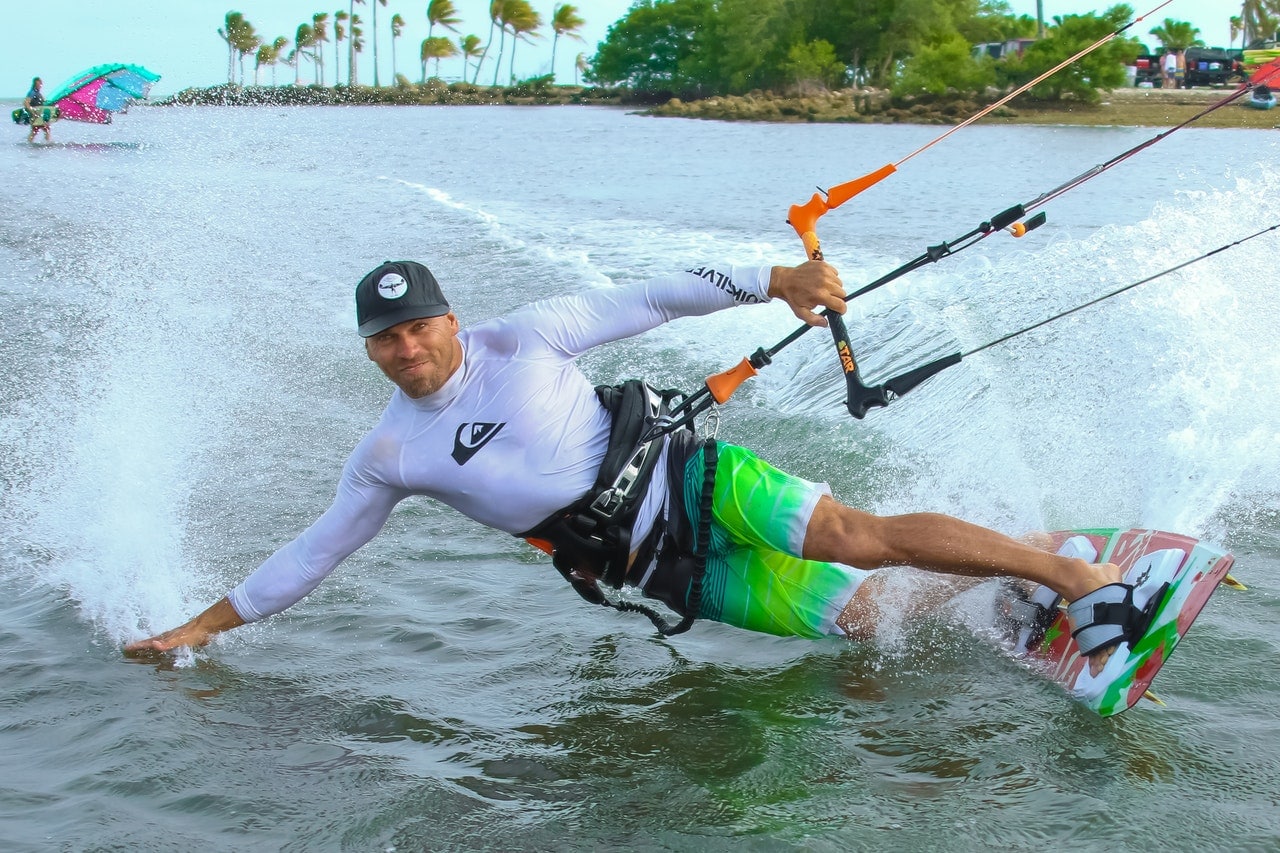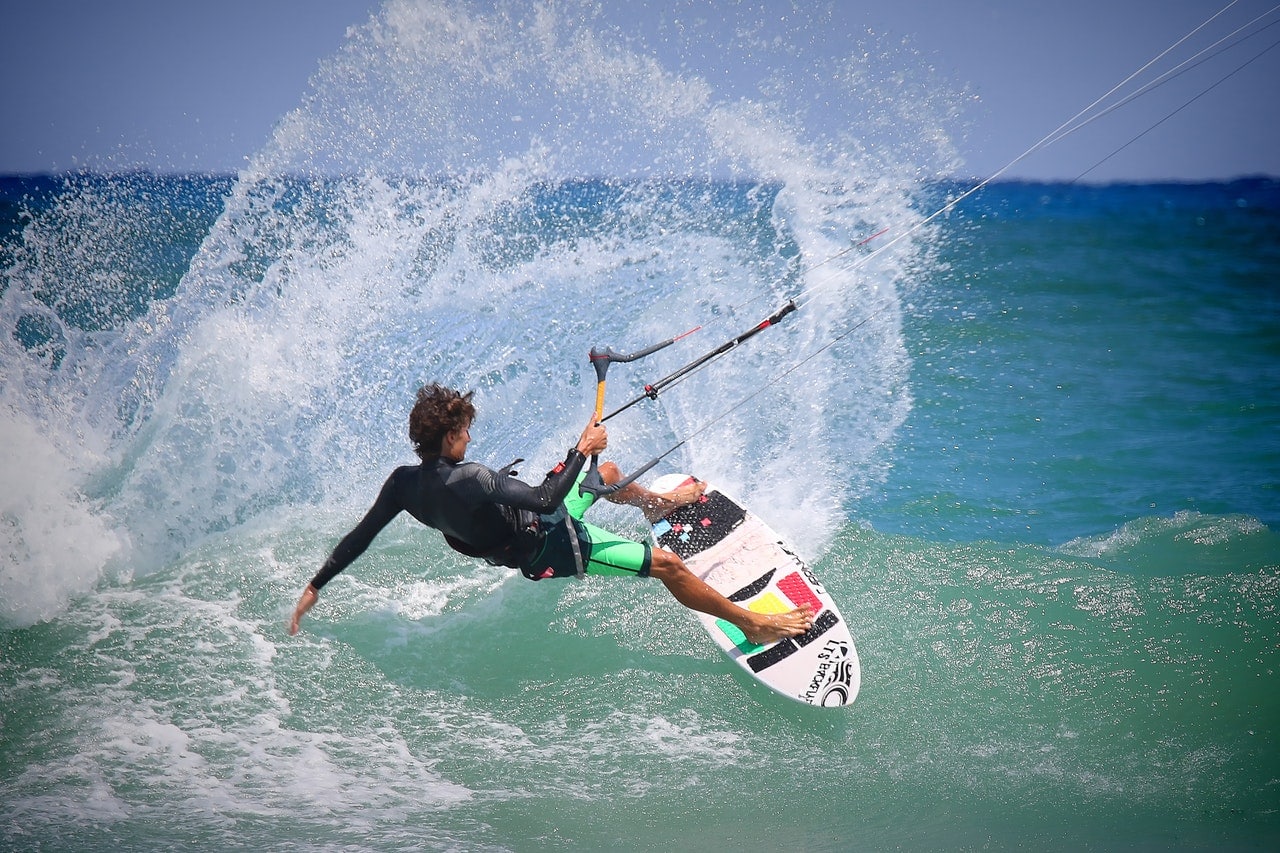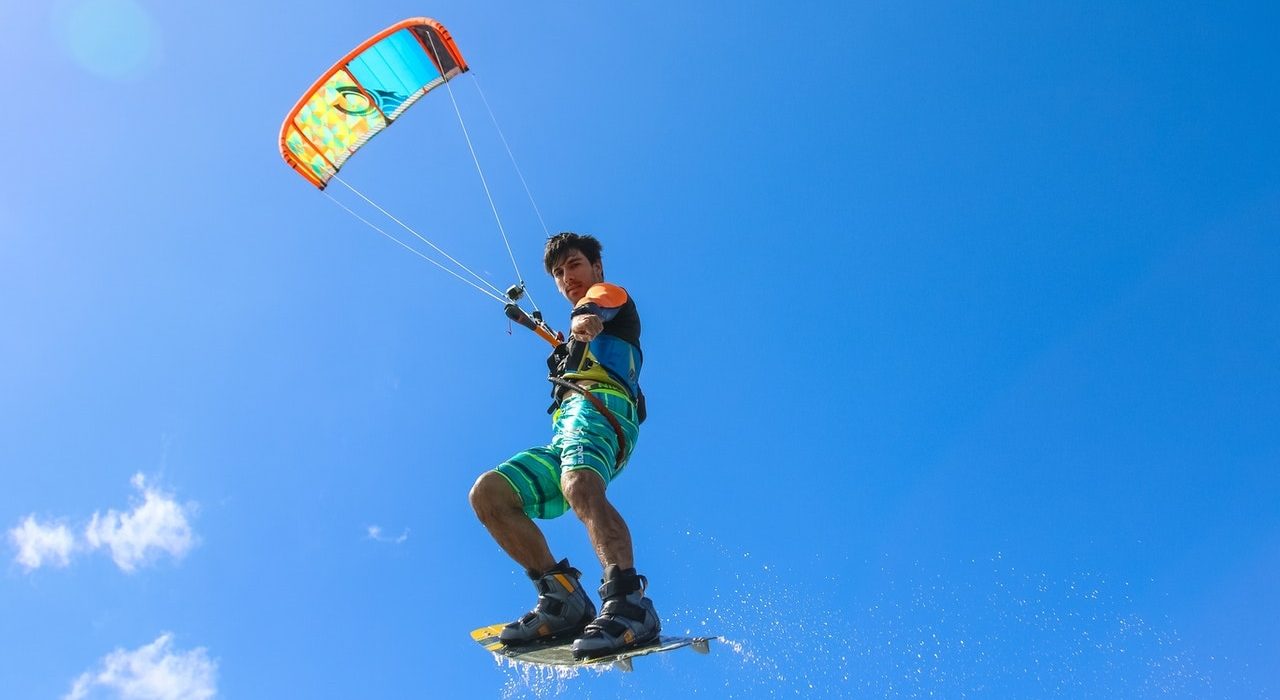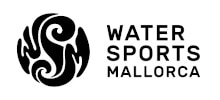Whether you are a beginner or an experienced kitesurfer, you should know that the equipment is very important to make kitesurfing a super experience, can you imagine having to interrupt your kitesurfing because of a leaking kite? The Kitesurfing equipment must be renewed annually and if you are going to rent it, the frequency of renewal is something you should be informed about. In our centre we have equipment available for rent, completely or just the board, by the day, by the hour or with a weekly voucher. Below, we explain the basic elements to be able to have fun kitesurfing.
The kite
The part of the kitesurfing equipment that will be your wings is the kite. There are three main types of kites for kitesurfing:
- Type C: Powerful and semicircular kites. They are recommended for experts, who already handle complicated navigation and waves. Their handling is very aggressive. They are the ones that are evolving the most year after year.
- Advantages: They have a good ability to go upwind. They are quite stable, have a lot of power to jump and stay in the air for a long time. They can be used in a wide wind range and perform very well in gusty winds.
- Disadvantages: They are more difficult to relaunch from the water.
- Bow type or flat: They are more comfortable and easier to power (reduce the force with which they pull us if we run into a strong wind), so they are recommended for beginners. Maintains the basic characteristics of the C type kites but with the difference of a flatter wing design (less vault) and with pointed ends.
- Advantages: Increased wind range. They are very easy to relaunch from the water.
- Disadvantages: They are less powerful and at the same time have greater lift. They have less jumping ability.
- Hybrid: is a mixture of the two previous ones, the type C and the bow. Hybrid kites are more suitable for advanced and professional riders and are often used for freestyle or wave kiting, as they have a very direct feel and steering.
- Advantages: The advantages of the hybrid kite include a direct riding feeling, very precise handling of the kite and a low holding force on the bar.
- Disadvantages: A disadvantage is the impossibility to have 100% depower.
All of them are inflatable so you will need an inflator, it is a necessary element to fill our kite, it allows us to fill the leading edge and the struts of our kite with enough pressure to keep their shape.

The board
Here are two general tips before you get down to business:
- If you are going to buy it, try it out first. You can rent the same type of board you want to buy or have a friend lend it to you so that you can see how it performs on the water.
- Wind and board: as every wind needs a different type of board.
The best thing if you are going to buy is to choose one depending on where we will be sailing 90% of the time in a year.
So, what categories of boards are there, we explain three:
- Freeride boards: they are designed to surf in any sea conditions and not to sink in the wave. Freeride boards are usually entry level boards. These boards are easier to manufacture. As a result, the kiteboard has a low price.
- Free style boards: are more advanced. They have the full arsenal of modern innovations in kiteboarding. Designed primarily for riders who test freestyle elements in both choppy sea and flat water. Basically, these are high-tech boards and several manufacturers are trying to stand out with their technologies and know-how in the modern kitesurfing scene to attract our attention.
- Light wind boards: These are designed for riding in light winds. They are big boards with a length of 150 or more centimetres. There was a time when the trend was for wide boards, but now manufacturers are going back to long and moderately narrow models and these boards are suitable for kiters with a lot of weight. For some people, this may be the only option. In addition, light wind boards are ideal for initial training. It is easier and quicker to get on the kiteboard and take the first steps, as the board starts to glide earlier.
The bar
It is part of the safety system of the kitesurfing equipment. The bar will be where our hands will be placed to steer and power the kite. The bar normally has 4 or 5 lines that are attached to the kite. By raising and lowering the bar we will be powering the kite up or down. By moving it to the left or right we change courses, raise or lower the kite. To release the kite we will use all the safety systems of the bar. There are fibre or aluminium bars, but the main difference is the size of the bar. Each kite needs a suitable bar depending on its size.

The harness
In the practice of kitesurfing we attach ourselves to the kite, through the harness with the help of the bar and its lines. This element can be a waist harness or a seat harness (placed in the groin area). It is one of the most personal elements as far as comfort is concerned. The harness by its construction will sooner or later take the shape of our body. It is therefore recommended to buy a new or semi-new harness (with very little use) to ensure that it adapts to you and that you feel as comfortable as possible.
The wetsuit
When you start kitesurfing, one of the most necessary accessories is the kitesurfing wetsuit or kitesurfing neoprene. With it we will be able to avoid getting cold during our kite sessions and the neoprene chosen will make us feel more or less comfortable in the water. When choosing your wetsuit for kiteboarding, it is essential to look at the temperature of the water where you are going to practice your sport and choose the finish of the wetsuit according to your level and type of demand you need.
We can find wetsuits:
- For beginners: these are cheaper, very resistant wetsuits that come with a zip on the back to make them easier to put on.
- For more advance riders: these are a much more flexible wetsuits that gives you freedom of movement. The seams are stitched and glued for greater watertightness. They are usually ultra-flexible neoprene with a chest zip; sewn-glued and heat-sealed seams make for a very warm neoprene.





